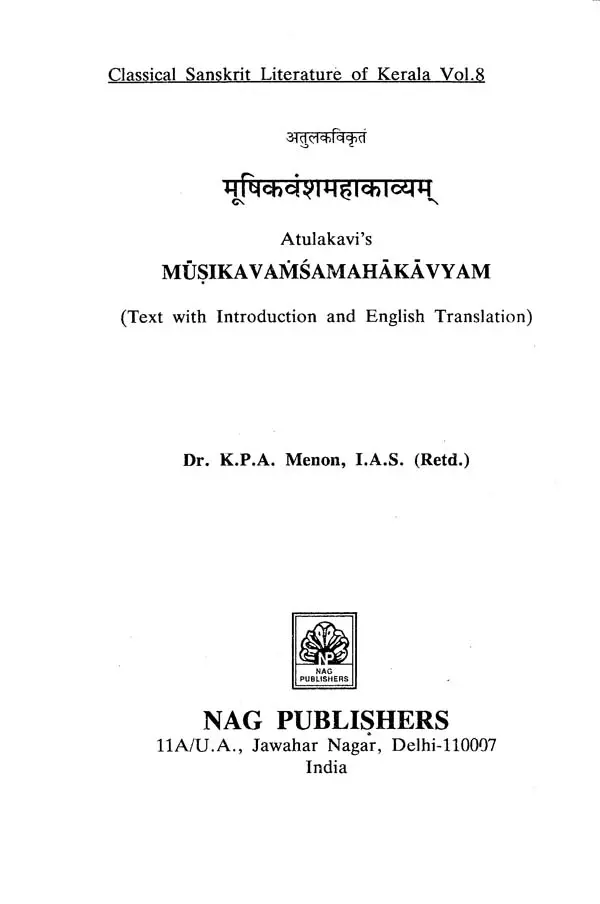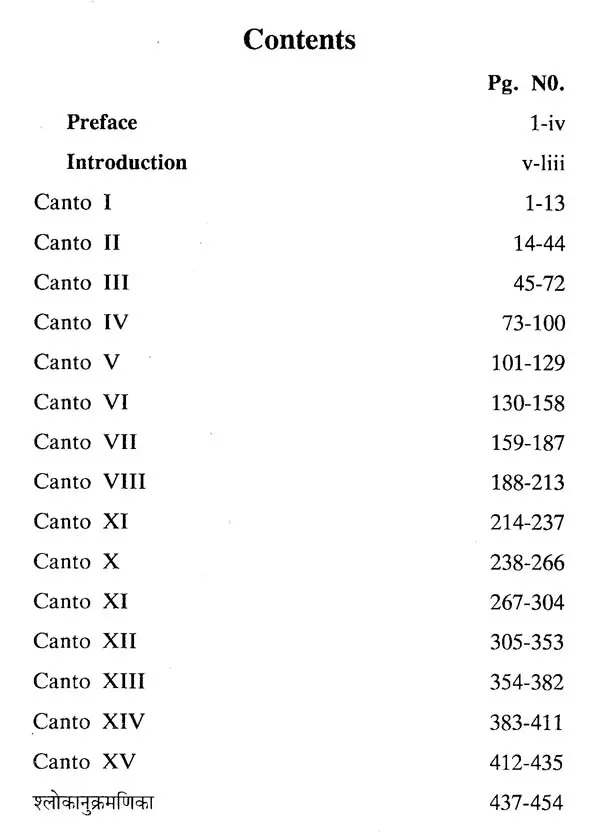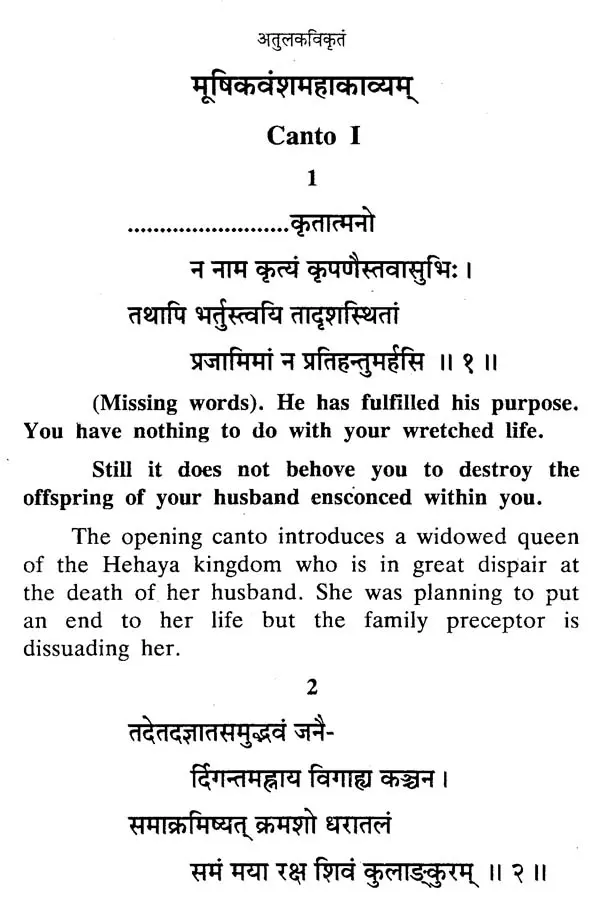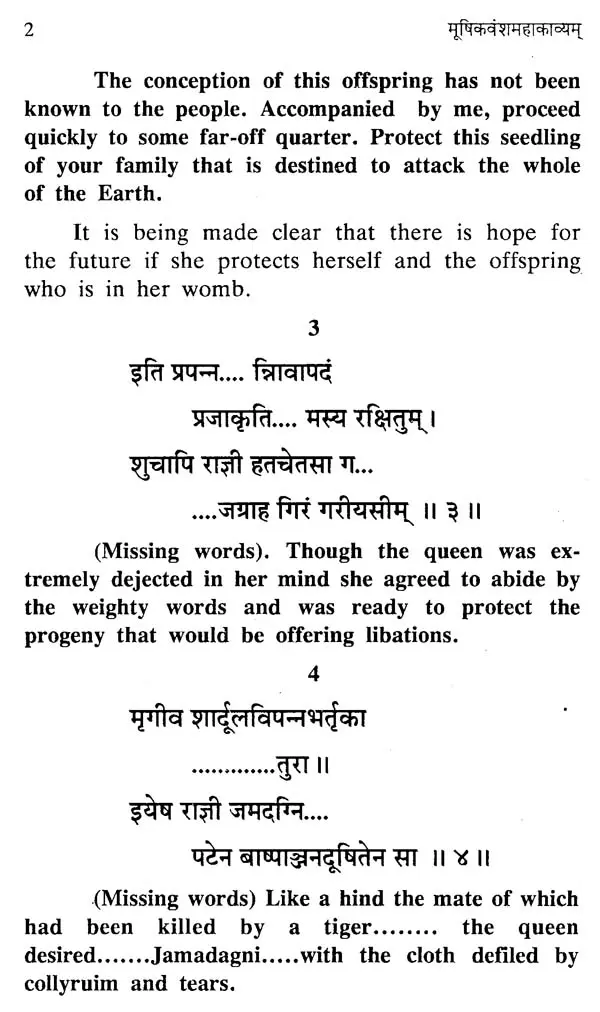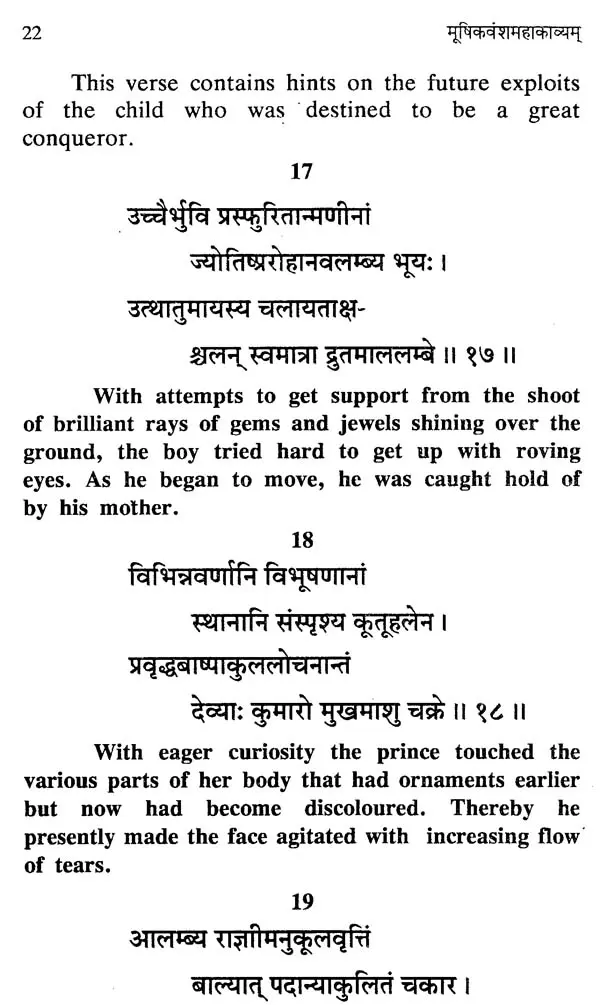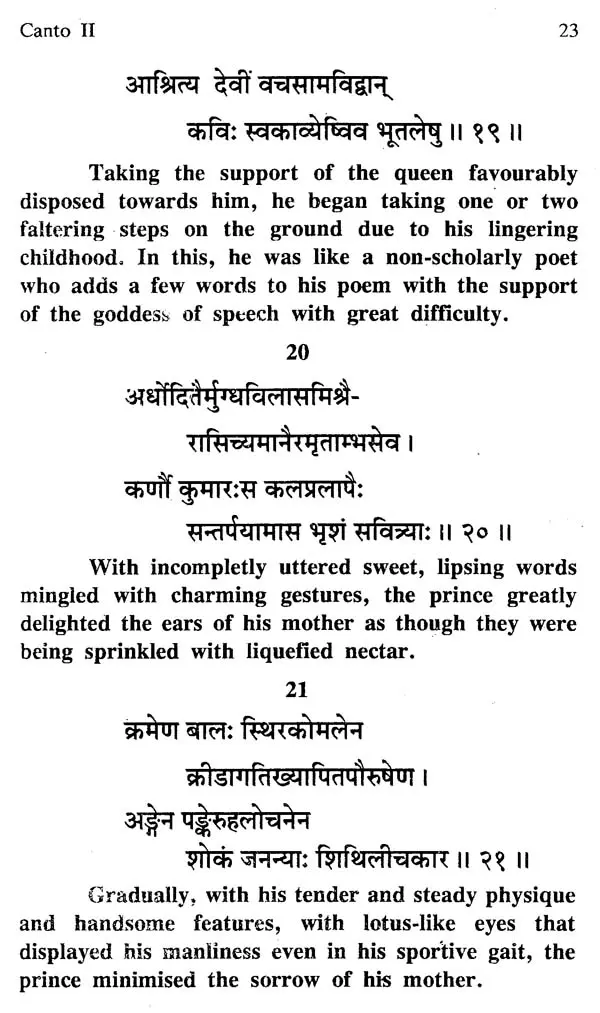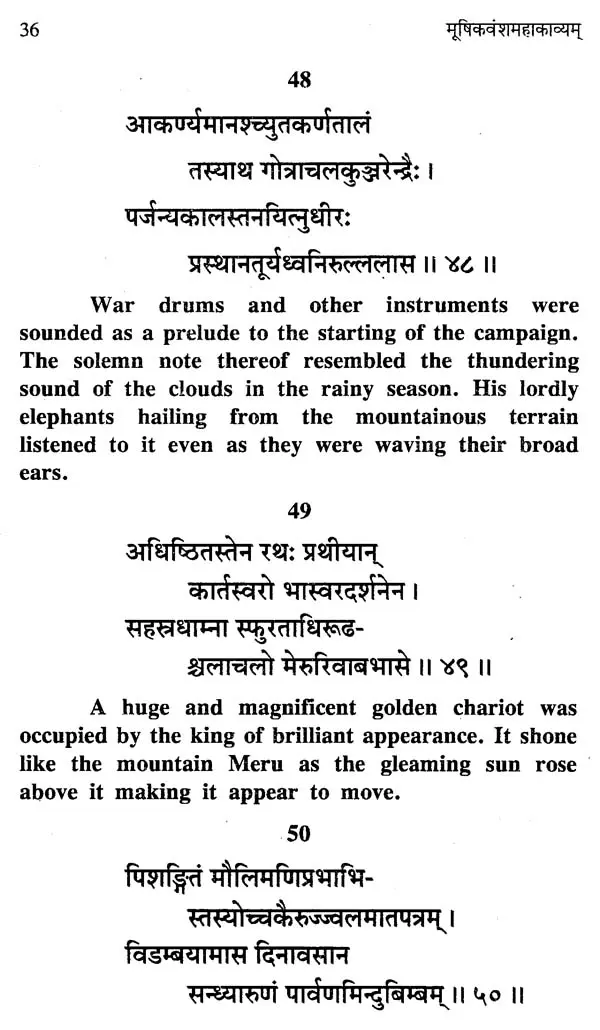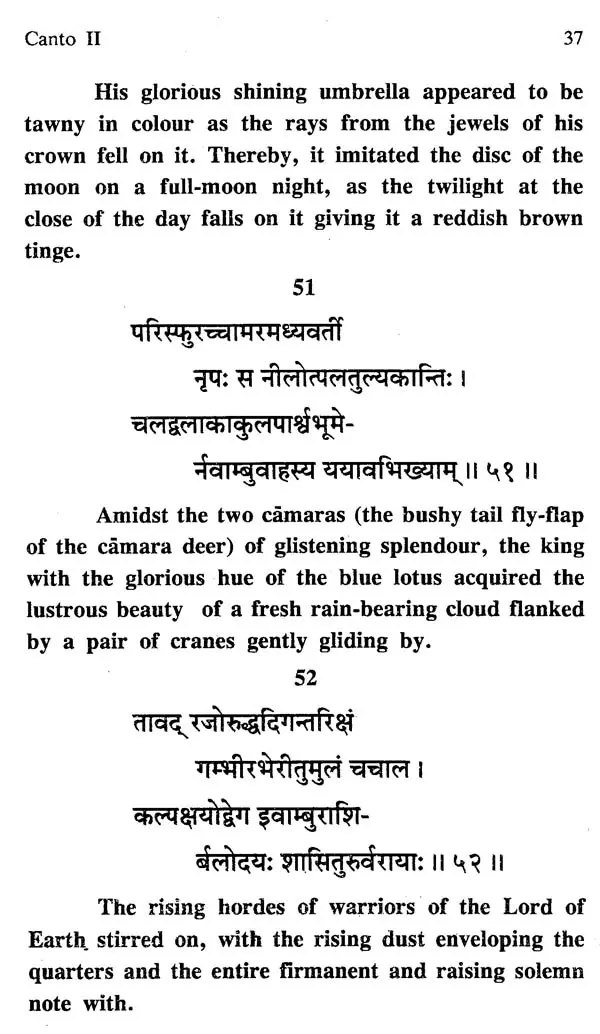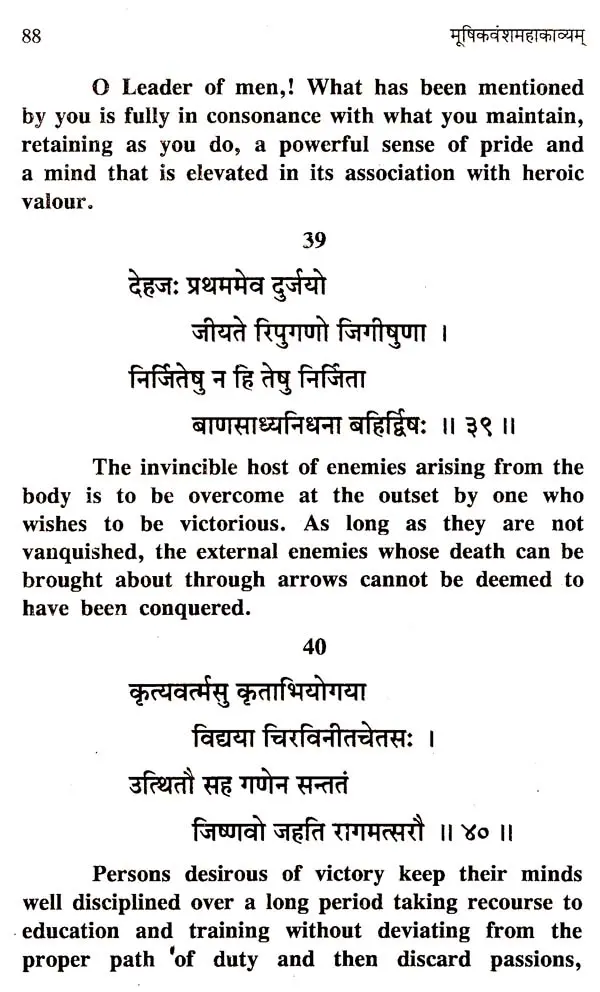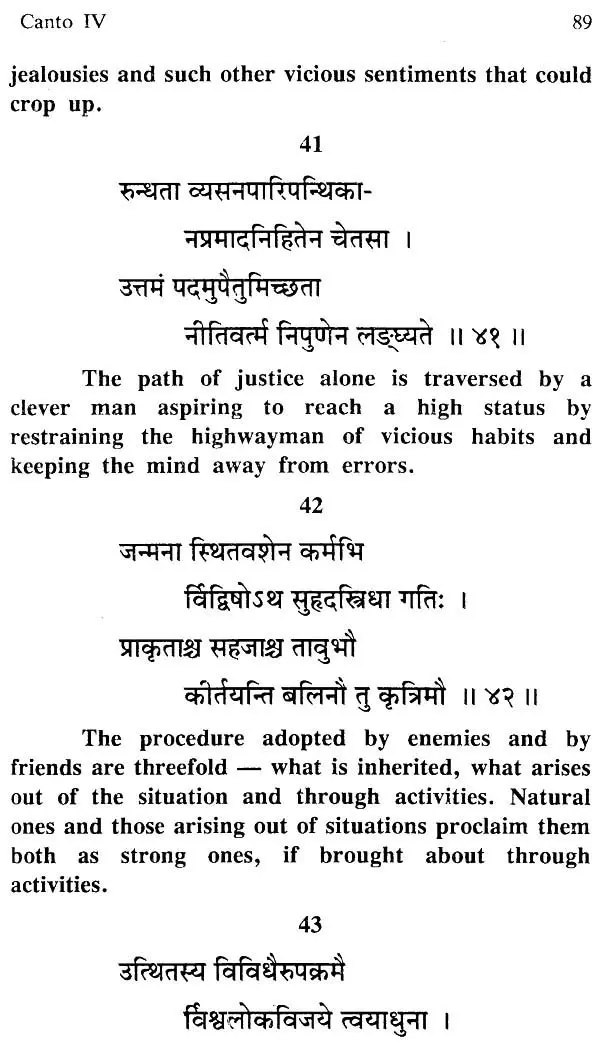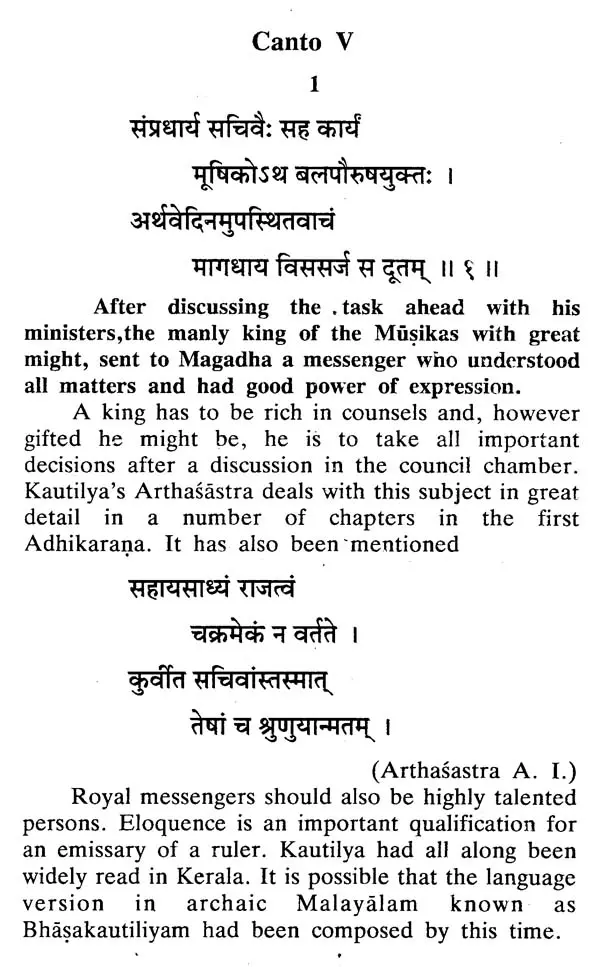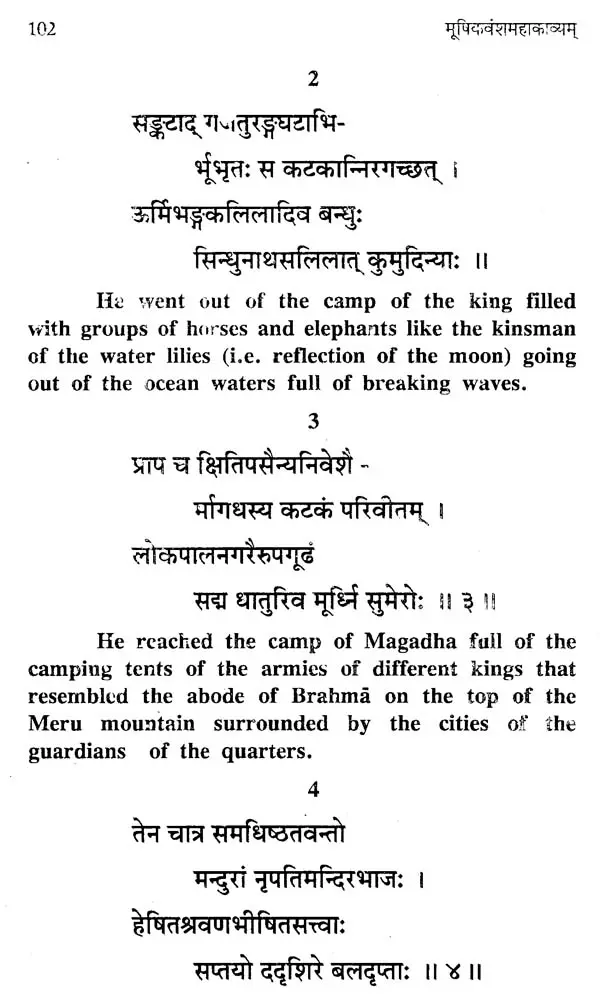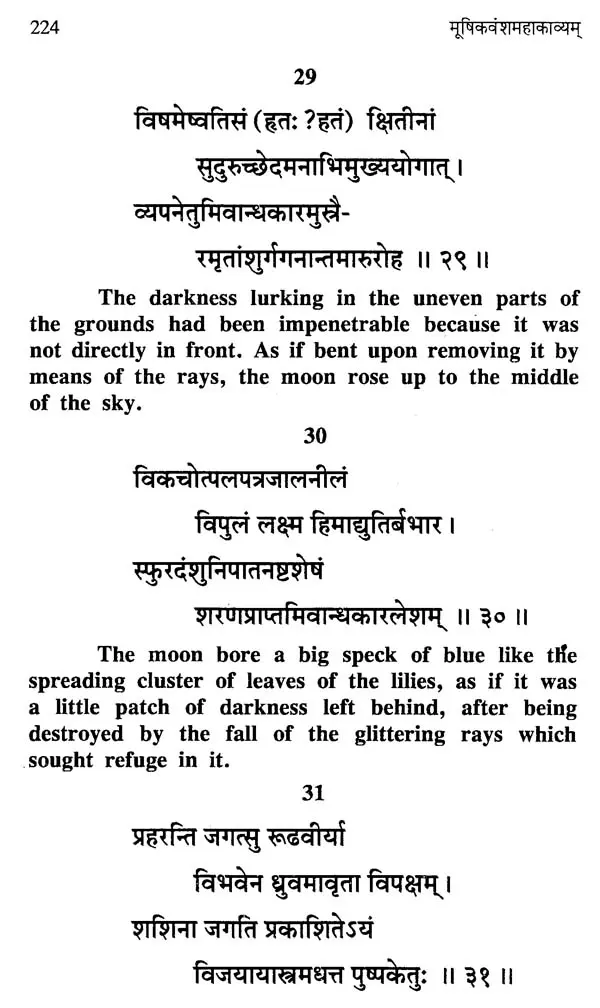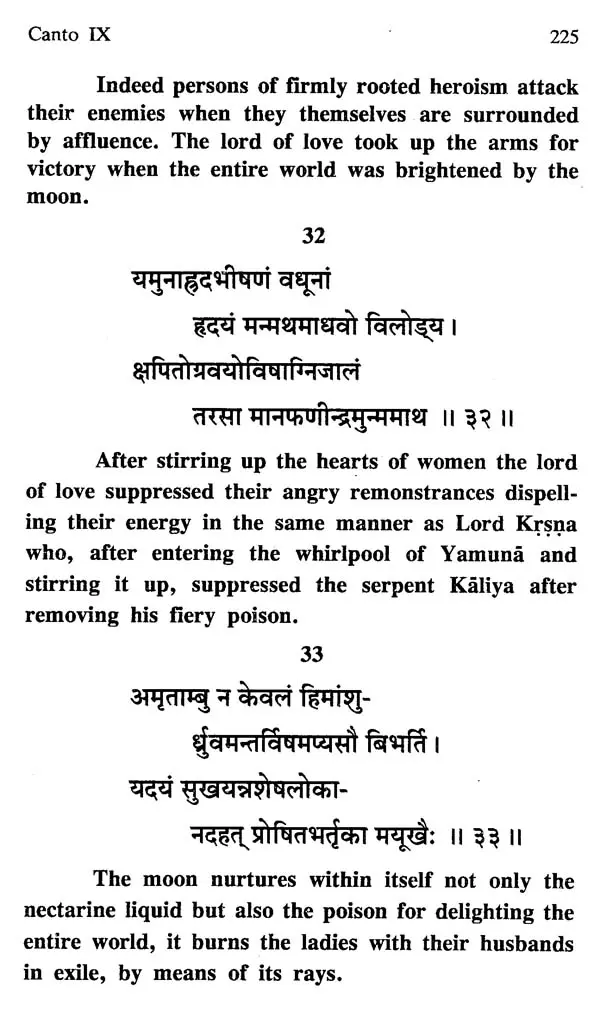
मूषिकवंशमहाकाव्यम्- Musika Vamsa Mahakavyam- Text with Introduction and English Translation (Classical Sanskrit Literature of Kerala Vol. 8)
Book Specification
| Item Code: | UAN620 |
| Author: | K. P. A. Menon |
| Publisher: | NAG PUBLISHERS |
| Language: | Sanskrit Text with English Translation |
| Edition: | 1999 |
| ISBN: | 8170815088 |
| Pages: | 509 |
| Cover: | HARDCOVER |
| Other Details | 9.00 X 5.50 inch |
| Weight | 660 gm |
Book Description
Poet Atula's Musikavamsa is an Epic Poem, Mahakavya, dealing with the History of the Musika dynasty that ruled over the kingdom of Ezhimala known by an alternate name of Kolathunadu. Some of the rulers of the Ezhimala kingdom have come for prominent mention in the Samgham literature of the early centuries of the Christian era. The composer of the Mahakavya does not appear to have drawn any material from the old Tamil literature but has given a mythological origin to the founder of the new dynasty and tried to give it a North Indian connection. Eminent historians have not ruled out such a possibility and, it is hoped that the availability of the text along with an authentic translation will be of great use to historians in throwning more light on subject. This poem should be considered as the earliest among Historical Kavyas since the poet is a contemporary of the ruler with the name of the Srikantha who flourished in the early decades of the 11th century A.D.
Dr. K.P.A. Menon, B.Sc., M.A, LL.B, Ph.D. Chancellor of the Lal Bahadur Shastri Rashtriya Sanskrit Vidyapeeth, New Delhi is an eminent scholar, scientist and administrator who has held many important assignments in the government including the post of Defence Secretary to the Govt. of India. Epic poetry and dramas have been his special field of interest and he is also trying to unearth the vast treasures contained in Sanskrit literature in diverse fields like agriculture, science and technology, polity etc: He is the recipient of a large number of national and international awards including the Honorary Fellowship of Biographical Academy of the Commonwealth & International Biographical Centre, Cambridge, Distinguished Leadership Award of the American Biographical Institute, Albert Einstein Memorial Medal, the Sahityanikasa and the Kalidasa Awards for his Sanskrit writings.
As one brought up in the old kingdom of the Samutiris (Zamorins) of Kozhikode I had been hearing about the Kolathiris of North Malabar who were the traditional rivals of the Samutiris. While studying in the Zamorin's College, Calicut, I first made my acquaintance with some of princely blood, my classmates, who belonged to the two ancient royal families. Often, we used to discus the past and interesting episodes came out with usual embellishments from some of them. Our hostel itself was by the side of the famous Thali temple associated with the rulers of Calicut and such personages like Uddanda Sastri. We also used to get a lot of inspiration from the great historian, K.V.Krishna Iyer who was the Lecturer of History in our college. Though not a student of history myself, he had taken kindly to me and, some communications received by me from him in my mature years, I still preserve as a valued tresure.
Poet Atula's Musikavamsa is an epic poem, Mahakavya, dealing with the history of the Musika dynasty that ruled over the kingdom of Ezhimala known by the alternative name of Kolathunadu also. The alternative name may create some confusion because a number of kingdoms or principalities came up in later years in the land once ruled over by the Musika kings during the early centuries of the Christian Era. While the Kola kings could be considered as the successors of the Musika dynasty dealt with in this Mahakavya the origin of many other principalities is often shrouded in myths and legends. During the postKulaschara era many of them accepted the suzerainty of either the Samutiri (Zamorin) of Kozhikode (Calicut) or of the Kolabhupa (Kolattiri). Kurumpuranadu had accepted the overlordship of the Samutiri by the time the British menace came in a big way. Katathunadu which is believed to be the Malayalam version for the Sanskrit word Ghatotkacaksiti (the land of Ghatotkaca), which extended from Mahe to the river Kora, was originally a part of the kingdom of Kolattiri and, even as a separate kingdom, had continued its allegiance to the Kola rulers. The kingdom of Kottayam with its famous citadel on the Purali hills claims its origin from a ruler with the name of Hariscandra. Apart from producing at least two great literary figures, this royal family got the focus of attention during the regime of the famous Kerala Varma of Palachi who fought against the powerful East India company in the forests of Wayanadu. There were many principalities like Nilesvaram, Poynadu, Kurungot, Kannur etc the last one with a Muslim as the ruler. All these kingdoms and many other royal dynasties that came up through matrimonial alliances are of later origin. During the period dealt with in this kavya extending up to the 12th century A.D the bulk of northern Malabar appears to have been under the ruled of the Musika rulers though on occassions, they might have been subjugated by the Cera rulers.
**Contents and Sample Pages**
